View in other NatureServe Network Field Guides
NatureServe
Montana
Utah
Wyoming
Idaho
Wisconsin
British Columbia
South Carolina
Yukon
California
New York
Lambda Snaggletooth Snail - Gastrocopta holzingeri
Other Names:
Pupa holzingeri
General Description
A very small shell, to 0.8 mm diameter and 1.9 mm in height, subcylindrical (pupiform) and tapering, about 5 whorls. Shell coloration is translucent white. Aperture oval, with six teeth (denticles: forked parietal, columellar, subcolumellar, lower palatal, upper palatal, suprapalatal), the forked parietal tooth in the shape of the Greek letter lambda (upside down "y") with one end attached to the aperture lip, columellar tooth curves downward within the aperture, palatal callus present, sinulus absent, crest present and oblique, lip thin and flared (Hendricks 2012, Burke 2013).
The subspecies in Montana would be Gastrocopta holzingeri holzingeri
Diagnostic Characteristics
Shape (pupiform) and color (transparent whitish), with teeth in the aperture distinguish Gastrocopta from similar sized and shaped shells (Pupilla, Vertigo, Columella). G. armifera is the largest (height > 3.5 mm, diameter > 2.0 mm) with 6 teeth in aperture. Both G. holzingeri and G. pentadon are about 2.0 mm in height and 1.0 mm in diameter. G. holzingeri has a parietal tooth forked and shaped like the Greek letter lambda and a columellar tooth curving downward (basally) within aperture; the parietal tooth of G. pentodon is not lambda-shaped and the columellar tooth does not curve downward within the aperture.
Species Range
Montana Range
Range Descriptions

 Native
Native
Range Comments
Ontario and western New York west to Alberta and Montana, south to Kansas and New Mexico. In Montana, reported east of the Continental Divide from two counties: Lewis and Clark, Wibaux. Elevation range is 823 to 1372 m (2700 to 4500 ft). Range and abundance in Montana are poorly understood; current status needs investigation (Hendricks 2012).
Observations in Montana Natural Heritage Program Database
Number of Observations: 1
(Click on the following maps and charts to see full sized version)
Map Help and Descriptions
Relative Density
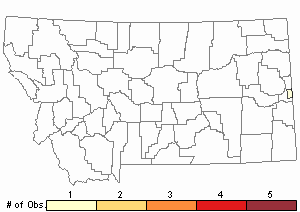
Recency
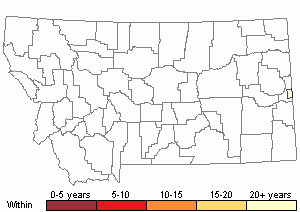
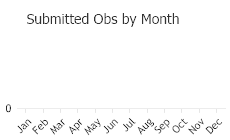
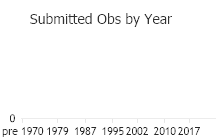
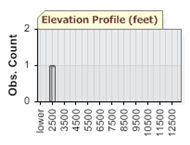 (Observations spanning multiple months or years are excluded from time charts)
(Observations spanning multiple months or years are excluded from time charts)
Habitat
Not described for Montana (Hendricks 2012). Wooded slopes under moist leaf litter in British Columbia (Forsyth 2004).
Stewardship Responsibility
References
- Literature Cited AboveLegend:
 View Online Publication
View Online Publication Burke, T. E. 2013. Land snails and slugs of the Pacific Northwest. Corvallis, OR: Oregon State University Press. 344 p.
Burke, T. E. 2013. Land snails and slugs of the Pacific Northwest. Corvallis, OR: Oregon State University Press. 344 p. Forsyth, R.G. 2004. Land snails of British Columbia. Royal British Columbia Museum: Victoria, British Columbia, Canada. 188 pp.
Forsyth, R.G. 2004. Land snails of British Columbia. Royal British Columbia Museum: Victoria, British Columbia, Canada. 188 pp. Hendricks, P. 2012. A Guide to the Land Snails and Slugs of Montana. A report to the U.S. Forest Service - Region 1. Montana Natural Heritage Program, Helena, MT. vii + 187 pp. plus appendices.
Hendricks, P. 2012. A Guide to the Land Snails and Slugs of Montana. A report to the U.S. Forest Service - Region 1. Montana Natural Heritage Program, Helena, MT. vii + 187 pp. plus appendices.
- Additional ReferencesLegend:
 View Online Publication
View Online Publication
Do you know of a citation we're missing? Nekola, J.C. and B.F. Coles. 2010. Pupillid land snails of eastern North America. American Malacological Bulletin, 28(2):29-57
Nekola, J.C. and B.F. Coles. 2010. Pupillid land snails of eastern North America. American Malacological Bulletin, 28(2):29-57 Pilsbry, H.A. 1948. Land Mollusca of North America (north of Mexico), Volume II Part 2. The Academy of Natural Sciences of Philadelphia Monograph Number 2(2): 521-1113.
Pilsbry, H.A. 1948. Land Mollusca of North America (north of Mexico), Volume II Part 2. The Academy of Natural Sciences of Philadelphia Monograph Number 2(2): 521-1113. Squyer, H. 1894. List of shells from the vicinity of Mingusville, Montana. The Nautilus 8:63-65.
Squyer, H. 1894. List of shells from the vicinity of Mingusville, Montana. The Nautilus 8:63-65.
- Web Search Engines for Articles on "Lambda Snaggletooth Snail"
- Additional Sources of Information Related to "Snails / Slugs"





